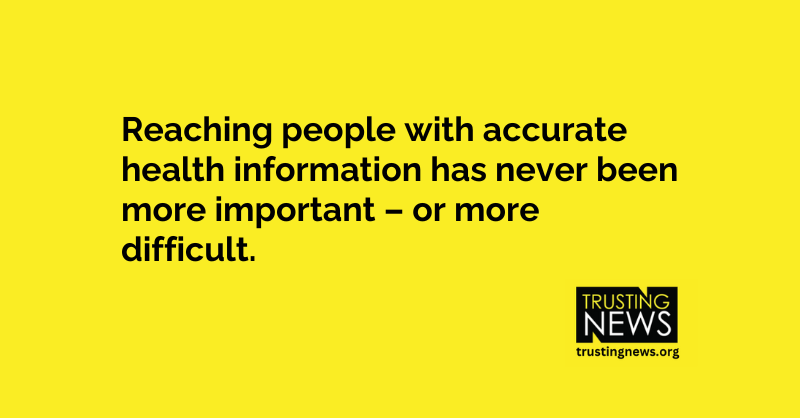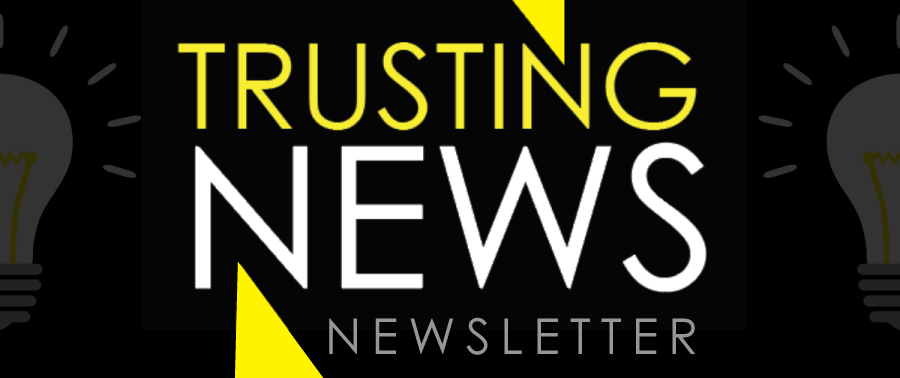
This weekly Trust Tips newsletter shares quick, actionable tips for how journalists can earn and sustain trust. Subscribe to get it in your inbox at trustingnews.org/newsletter.
Explain your election coverage goals with a mission statement and FAQ page
At Trusting News, we know newsrooms take time to strategize their election coverage, often meeting months in advance. These discussions focus on what races to prioritize and the overarching ethical considerations guiding reporting.
And yet … despite the time and effort put into this planning, these strategies and decisions frequently go unnoticed by the public. This leaves audiences left to interpret coverage without insight into the rationale behind it, leading to accusations of thoughtlessness, bias and unfairness.
As your newsroom continues covering the upcoming elections — and political/government coverage more broadly — get on the record about your goals. Don’t leave people guessing when it comes to how you are prioritizing coverage, where they can get the latest information, how you fact-check, etc. Tell them.
There are two ways to do this:
- Create an elections/politics mission statement: This is similar to an organizational mission statement, but instead of applying to all of your journalism, it focuses on your election or political coverage. It should address how you cover races, politicians, voting and even democracy.
- Create an FAQ page: A user-friendly FAQ page offers readers a casual, accessible way to learn more about how you are going to cover the election/politics. Unlike an official About Us page or policy page, an FAQ can feel less formal — almost like a conversation between reader and journalist. It’s also easy to add to or edit and often doesn’t need the layers of editor approval required for official policies.
We have a guide for how to create a mission statement (including suggestions on what it should include). We also have more details about how to create an FAQ page (including how to use it).
Our tip for this week: Start the process for both now. The earlier you have this completed, the more you will be able to use what you have written to help build trust.
Want more tips like this? This post was originally featured in our weekly Trust Tips newsletter. Subscribe to get it in your inbox each Tuesday.
To inspire you, we have five new examples from newsrooms we worked with during the Advancing Democracy training program:
- La Raza Chicago: Linking to FAQ in daily coverage
- The Current: Writing with your audience in mind
- Outlier Media: Explaining what you won’t cover
- USA TODAY Ohio: Explaining your coverage focus for 2024
- KUNR: Publishing an FAQ in both English and Spanish
(Advancing Democracy is a partnership with The Solutions Journalism Network, Hearken and Good Conflict. It supports reporters and editors in significantly strengthening journalism’s role in advancing our democracy through innovative approaches that build civic engagement, equity and healthy discourse.)
1. La Raza Chicago: Linking to FAQ in daily coverage
La Raza Chicago does a great job of routinely linking back to their election FAQ in daily reporting.

By linking back to their FAQ in daily stories they are explaining their decision-making when they already have the user’s attention. This allows the newsroom to share explanations about why they are covering a particular race, explain how they try to get in touch with politicians and more.
Remember, people will make assumptions about those things and most of the time those assumptions will be negative. By sharing explanations and information with them while they may be wondering about something, you are filling an information gap for them, not leaving left to wonder and assume.
In their FAQ La Raza answers questions like:
- How do you select issues, sources, geographic areas, communities, organizations, and so on when deciding what to report and who to interview?
- Do you cover democracy, politics and elections with a specific focus (community, geographic, thematic) or do you provide general coverage?
- Is La Raza’s coverage non-partisan or affiliated with a party, ideology or political position?
2. The Current: Writing with your audience in mind
With its election mission statement, The Current does an amazing job explaining their election coverage goals with direct language that is relatable and understandable for the reader. By doing this the newsroom lays out what they are trying to accomplish and who they are trying to reach.

Under the mission statement is an FAQ that explains some of what they mentioned in the mission statement in more detail, including some basic but important questions like:
- Who is a young voter?
- How are you listening to young voters?
- What do you mean by “equipping” young voters to advocate for themselves?
- Which races are you going to cover?
- Are you not going to cover other races?
The FAQ is expandable, which is user-friendly and makes the content seem easier to digest and less overwhelming.
The Current team also links to their mission statement and FAQ page in daily coverage. In this story, they use a shaded box to explain why they are covering the topic of the story (young voters told them it was important) with a link to the FAQ page explaining their focus on young voters.

3. Outlier Media: Explain what you won’t cover
Outlier Media’s election FAQ page does a great job explaining what they will and will not cover during election season. It also explains some basic elements of journalism like how they fact-check. They explain that they make story coverage decisions based on feedback they receive from the community and prioritize what gets covered by thinking about what is not receiving news coverage and topics and issues that are actionable.
I particularly like the team’s explanation of what democracy/election coverage means.

The explanation goes on to explain how they were partnering on a community-wide survey to better understand the civic institutions Detroiters are connected to, what challenges people in Detroit are facing and what problems people want fixed first.
4. USA TODAY Ohio: Explaining coverage focus for 2024
The Ohio USA TODAY team answered questions about what races they will focus on in 2024, why they cover Republicans more than Democrats, who their reporters are and more in their election FAQ.
They also explain who the team is, which is important since they are a bureau connected to USA TODAY, which isn’t something the public will automatically understand.

The team also links back to the FAQ in daily stories.
5. KUNR: An FAQ in both English and Spanish
KUNR Public Radio answered basic questions about how they operate and cover news in Nevada and published the questions and answers in both English and Spanish.
The newsroom decided which questions to answer by asking their community. They compiled a list of the eight frequently asked questions they heard by holding in-person events, collecting questions at community festivals, and listening to the people they interviewed. We love this approach of allowing community feedback to guide what you share and explain.

The KUNR team links to this FAQ from other content on their website, including this very helpful content guide, that explains how the newsroom covers topics the community said they are interested in. They also mentioned the FAQ and the explanations included in it during on-air promos about the station.
Have any examples to share?
We’d love to see how your newsroom is working to build trust and demonstrate credibility! Feel free to share examples with us here, on LinkedIn, Twitter or email at info@trustingnews.org.
Thanks for reading!
Lynn Walsh, Trusting News assistant director
January 30, 2023
At Trusting News, we learn how people decide what news to trust and turn that knowledge into actionable strategies for journalists. We train and empower journalists to take responsibility for demonstrating credibility and actively earning trust through transparency and engagement. Subscribe to our Trust Tips newsletter. Follow us on Twitter and Facebook. Read more about our work at TrustingNews.org.

Assistant director Lynn Walsh (she/her) is an Emmy award-winning journalist who has worked in investigative journalism at the national level and locally in California, Ohio, Texas and Florida. She is the former Ethics Chair for the Society of Professional Journalists and a past national president for the organization. Based in San Diego, Lynn is also an adjunct professor and freelance journalist. She can be reached at lynn@TrustingNews.org and on Twitter @lwalsh.



